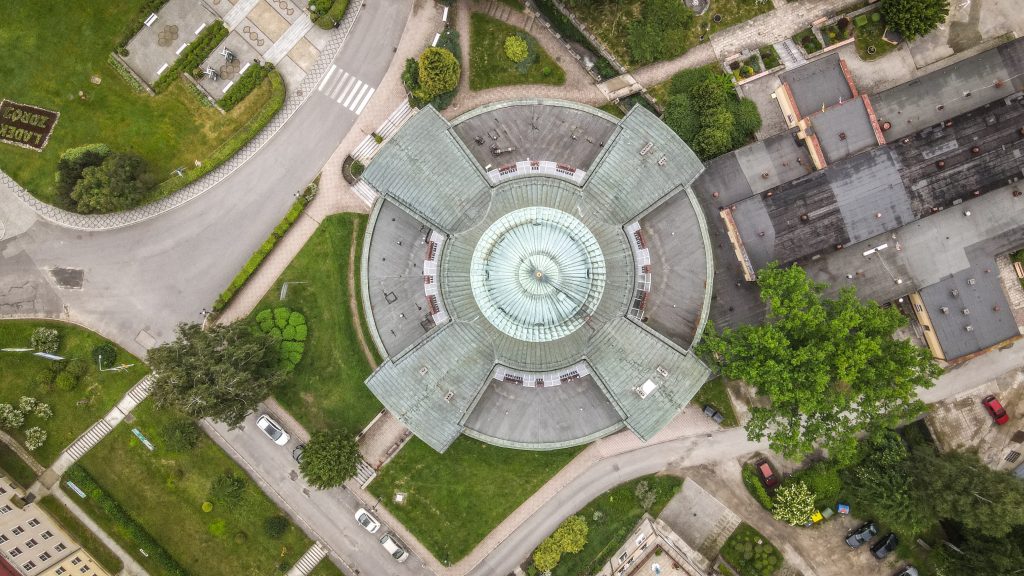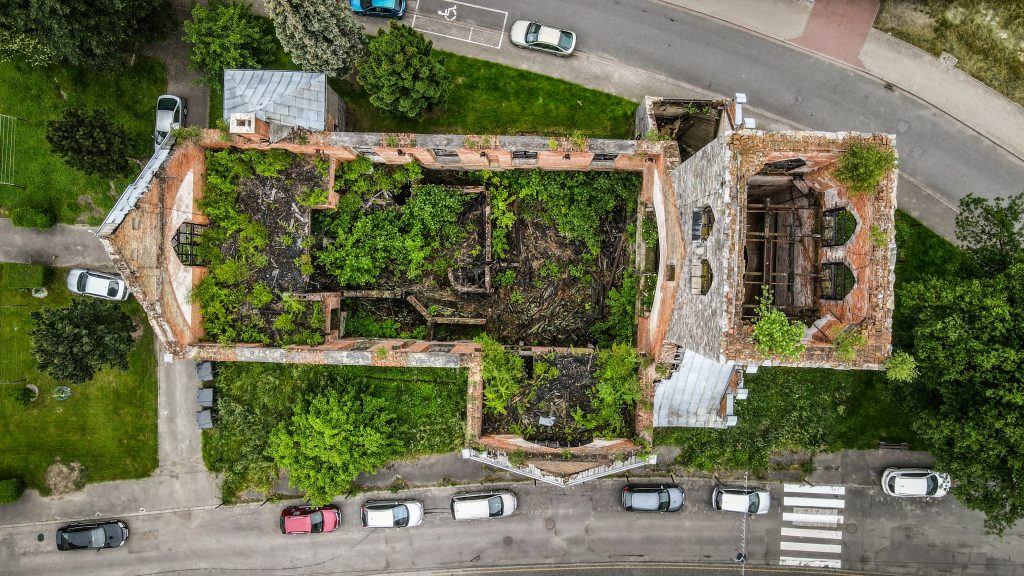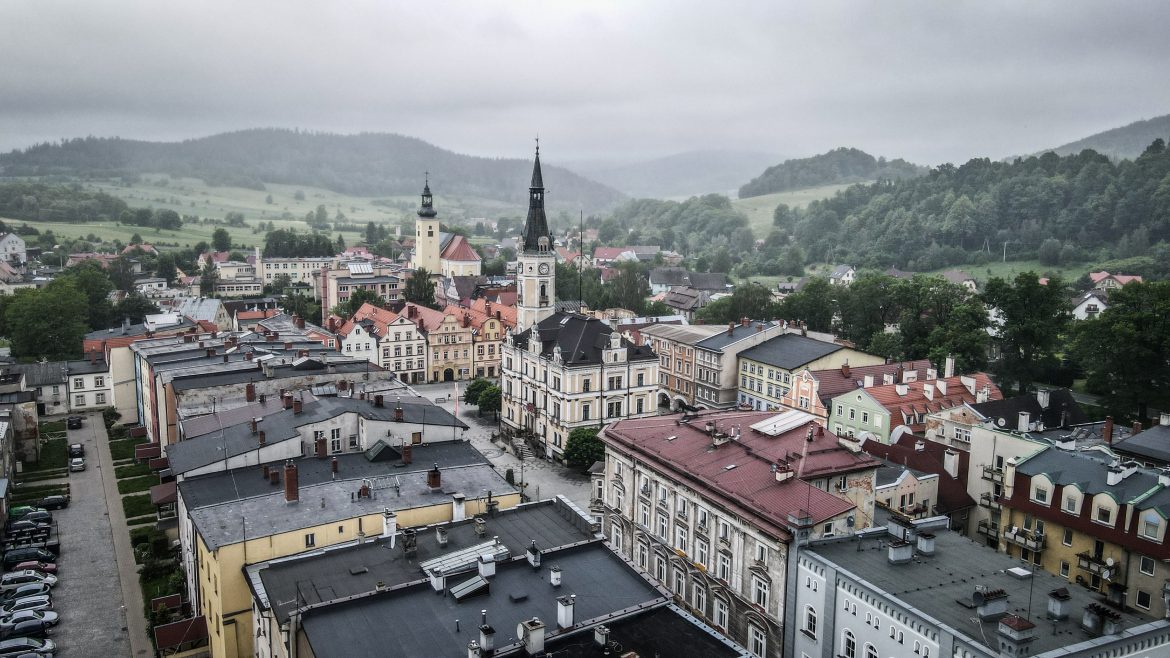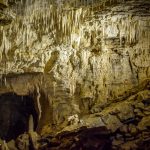After the night near Stronie Village, I had to retreat my steps towards Biała Woda and join Main Sudetes Trail there. Luckily, the same as the day before, I managed to catch a ride quite quickly and save my legs from walking on a boring asphalt road.
The good news was that the distance to Lądek Zdrój (12 km) is rather easy and without significant elevation gains. A mostly downhill path through the forest is especially nice in hot weather and with sore muscles after getting to the top of Śnieżnik on the previous day.
I made a short break at Kąty Bystrzyckie. Next, the track goes gently uphill to the pass where you can see a small chapel. The legend says that it was built on the site of the death of 3 Swedish generals during the Thirty Years War.
The track follows the wide and comfortable road through the farmlands and forest until the first buildings of Lądek Zdrój pop up on the horizon. I could hear thunders becoming louder and louder, therefore I quickened my pace and shortly after arrived at the market square in the city centre.
The town is considered to be the oldest health resort in Poland, because according to historical sources, as early as 1241 there were bathing facilities here destroyed by Mongols returning from the battlefield near Legnica.
The area of old market square with the town hall, old tenement houses and restaurants is nice for a longer break and hot meal. Other than that, I recommend checking out the building of Wojciech Spa, Protestant church ruins as well as two picturesque bridges: the one of St. John of Nepomuk which is close to the old market square and the covered bridge which is more in the spa part of the city (still within walkable distance).
Wojciech Spa – a historic building from the 17th century, rebuilt two hundred years later. It houses a marble swimming pool designed in the style of a Turkish bath, stylish stone bathtubs for pearl baths and a pump room for waters from local springs.


Bridge of St. John of Nepomuk – It was erected in 1565. The author of the sculpture took inspiration from the figure of the patron saint of Bohemia on the Charles Bridge in Prague.

Covered Bridge – one of the most original and beautiful monuments in Lądek. It was built in the 1930s in order to connect two spa facilities.

Protestant church ruins – built in 1846, the temple was destroyed in the fire in 1999.

The second part of the day from Lądek Zdrój to Złoty Stok is longer (16 km) and much more difficult due to elevation differences, especially ascent to the Great Jawornik (Jawornik Wielki, 872 m n.p.m.).
I left Lądek Zdrój crossing the bridge over Biała Lądecka and followed the red track towards Pass Under the Konik (Przełęcz Pod Konikiem) and further to Orłowiec village. There, it was time to take a turn from the main road and start tiring ascent to Jaworowa Pass (Przełęcz Jaworowa).
It’s over 3 kilometres to the top of the Great Jawornik. The views are limited because of the trees but there is a viewing platform within 150 metres of a detour from red track. Unfortunately, clouds were hanging very low and I could see absolutely nothing anyway.
There are 6 more kilometres to Złoty Stok but all the way downhill so it didn’t take long to reach historic villa Złoty Jar and shortly after I saw first tourists hanging around in rope park and gold mine museum. Sightseeing was on my list too but first I wanted to drop my heavy backpack at Gold Stok Hotel. The room was simple but comfortable. Moreover, a bed and a private bathroom was everything I needed at that time.
It was getting late and there is quite a lot to see in Złoty Stok, therefore I simply went out for the walk and dinner, leaving tourist attractions for the morning of the next day.
This medieval mining settlement was established in connection with the mining of gold (traces from as early as the 10th century were discovered). Złoty Stok is the oldest mining and metallurgical centre in Poland. The last mine (arsenic ores) was closed in 1961. Today, it’s a popular tourist destination with all attractions being related to its past.
Gold Mine Museum – A specially prepared tourist route with a museum exhibition covering two adits. The first one is called “Gertrude” (500 m) and presents a unique collection of geological maps, ancient mining instruments and rich collection of rocks, ores and minerals from around the world.
The second one, called “Czarna” (700 m), is located in the upper part. This adit leads visitors through the 16th-century, hand-forged workings. You can learn about mining techniques used over the centuries and admire the only underground waterfall in Poland. The tour ends with an underground tram ride in the direction of a daylight 🙂


Medieval Technology Park – A replica of a medieval settlement with a lot of real size devices. All of them still work and knowledgable guide presents their usage and let tourists try them themselves. 1-hour tour is concluded with the visit in Executioner Hut. He played an important role in punishing criminals and thieves.
Ochre Adit – It was opened in 2017 and the underground part includes 130 meters of the pavement that is opened for visitors. Sightseeing possible only with a guide.
Combined ticket for all three attractions costs 59 PLN per adult and you should count at least 3.5 hours for sightseeing.



